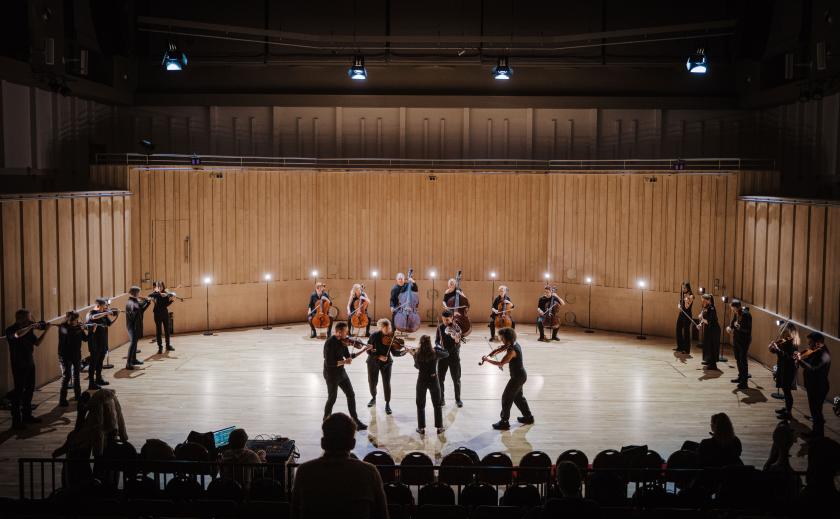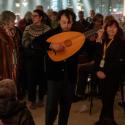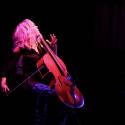Continuing the relationship with choreographer Örjan Andersson – who choreographed their landmark project Goldberg Variations – Scottish Ensemble gave the first of their latest movement-inspired performance, Impulse: Music in Motion in Glasgow on Friday evening.
Their programme comprised Shostakovich’s Chamber Symphony and Tchaikovsky’s Serenade for Strings, with these chamber works sandwiching an unannounced and stunningly articulated solo, Alia Fantasia by Nicola Matteis, played by Artistic Director Jonathan Morton. Everything was performed from memory, which frees the players up in a very practical way – moving around the stage whilst playing from sheet music on a stand is obviously not possible – but it seems to free the music up in an artistic way too. To have the music so ingrained that the need for its written reminder is unnecessary allows for a deeper relationship between each player and the work, and with each other, which was evident through the engaged and engaging sound the ensemble displayed throughout.
I must admit that the narrative of the choreography – if there was one – was lost on me. But that’s not to say I didn’t appreciate its merits. Moving around and hearing different parts played in different places really focuses the listening from the musicians’ point of view, and by design, enhances the synergy of the ensemble. For the audience, the swirling displacement of varying melodies gave an individual dimension to the overall aural effect, and for those used to a "typical" classical concert format, a slightly different visual focus can pique curiosity in new ways. Besides, for the most part, it looked pretty, with Albin Ǻkerman’s skilful lighting design enhancing the overall mood. At one point in the Tchaikovsky the stage lights were dimmed, and the upper string players revolved around the lower, giving the effect of one of those little carousel tealight holders often seen in gift shops at Christmas, with the players’ shadows softly rotating against the walls.
Whether the choreographed aspect is gimmicky or not is not really relevant. It wholly enhanced the overall music making even if that was in a more practical than aesthetic sense. Shostakovich’s Chamber Symphony was punchy and tight and performed with a magnetic energy. The sumptuous opening chord of Tchaikovsky’s Serenade for Strings was achingly beautiful, the second waltz movement delicately lightsome though underpinned by a strong drive and the finale played with conviction and a fiery passion.














Add comment